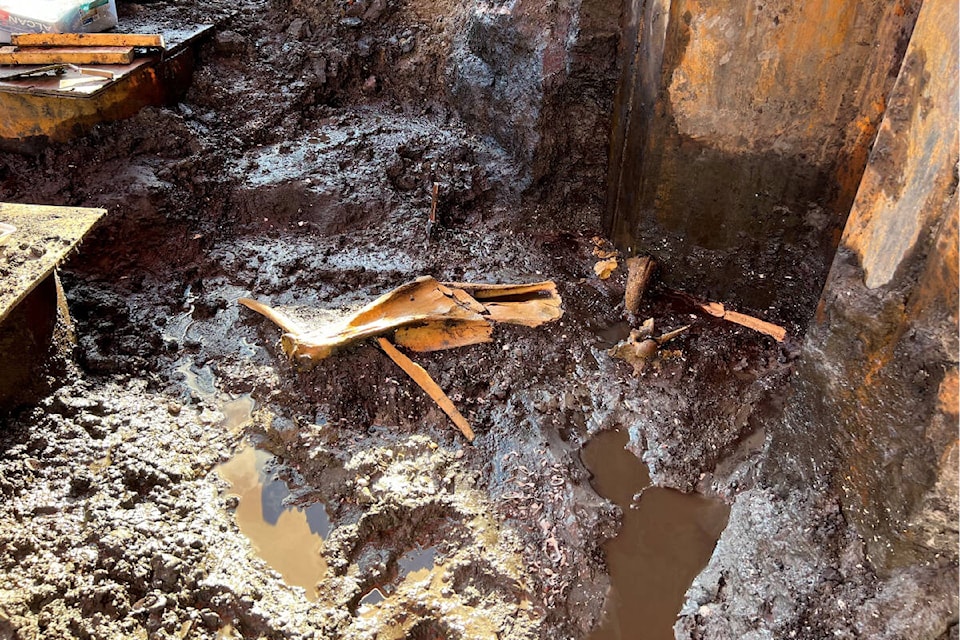A construction site in Saanich quickly turned into the site of a rare palaeontological find, after workers unearthed what experts believe to be the bones of a bison that roamed Vancouver Island thousands of years ago.
In a statement, Broadmead Care president and CEO Derrick Bernardo said bones estimated to be somewhere between 12,000 and 14,000 years old were found at the site of Nigel House, a complex care housing facility with long-term and assisted-living components currently undergoing expansion.
The skeletal remains – which include parts of the backbone, shoulder blades, skull, rib cage, feet and a horn – were discovered on Oct. 19 during the excavation of the site. Work in the area ceased almost immediately in order to allow a team of archaeologists and paleontologists to examine the finding.
“It’s pretty significant,” paleontologist Edward Davies told Black Press Media. Davies, who was among several experts called to the site, said that although bison bones have been found on the Island before, researchers still have much to glean from the discovery. “It’s important because we now have bison bones at the cusp of the glaciation change, when humans first came to populate the area,” he said.
According to Davies, the age of the bones is approximated by their position within the stratigraphic section – layers of clay, peat, volcanic ash and other sediments – of the excavation.
He estimates that the bison was an older male and substantially larger than the bison that inhabit North America today. Marine clay and sea shells surrounding the bones also suggest that the bison lived near the coast, Davies added.
Bison were known to have been in B.C. at least 12,000 years ago, and experts believe the large mammals were able to reach the Island via an ice-free corridor, a gap between the ice sheets that covered the top of North America, down the Canadian Rockies, during the last ice age.
The bones were recovered from the site on Wednesday (Nov. 2) and will be kept at the Royal B.C. Museum for further study. As of now, the museum has no plans to carbon-date the bones since there is sufficient evidence to support an approximate timeline of when the animal may have died.
“Broadmead Care is excited about this significant palaeontological find, and will continue to work closely with the appropriate regulatory and governing bodies to ensure these important items receive respectful and conscientious care,” Bernardo said.
ALSO READ: Langford’s pagoda house slated for demolition
Do you have a story tip? Email: austin.westphal@saanichnews.com. Follow us on Twitter and Instagram, and like us on Facebook.



